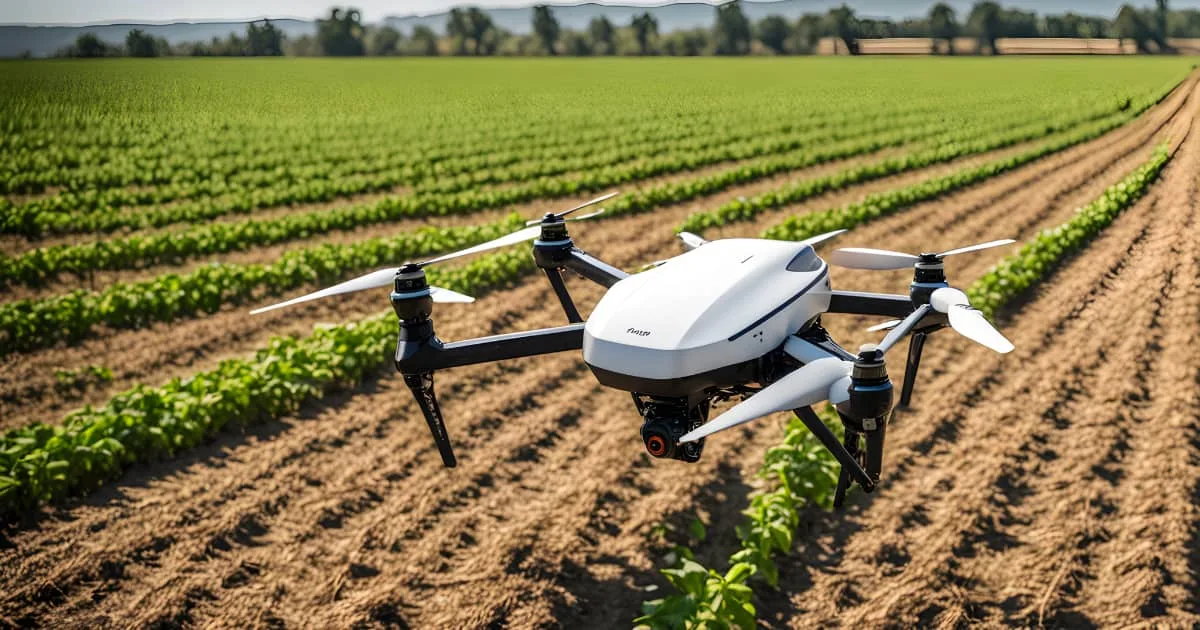Like many other industries, wholesale and retail trade continue to experience digital transformation on the back of technological advancements. Artificial intelligence(AI) has been at the forefront of this shift, helping businesses streamline and optimize different processes.
To underpin AI’s impact, forecasts indicate that its value in the retail sector stood at $5.5 billion in 2022. Estimates put the market size at $55.55 billion by 2030, growing at a CAGR of 34.1% between 2022-20301.
In this article, we review how AI is impacting wholesale and retail trade. We look at the benefits and the different use cases.
How AI impacts the Retail sector
Today’s retail sector is dynamic, driven by heightened customer expectations and demand fluctuations. Retailers continue to lean on technologies such as predictive analytics to provide a seamless experience for consumers. Here are ways AI will contribute to the retail industry.
Personalized customer experience
AI enables retailers to customize their product and service offerings based on a consumer’s preferences. Analyzing history and tracking behaviour in real-time across different channels(apps, browsing, devices) is a great data source. Such information can be processed via algorithms like content-based filtering, hybrid recommender systems, deep learning and reinforcement learning to provide insights about specific customer shopping habits.
Such insights open numerous opportunities for retailers, helping them understand their clients better. Targeting could be modeled around prices, brands and other fundamentals derived from the data.
Retailers stand to derive numerous benefits from consumer targeting:
- Customer preferences: Targeting customers’ preferences has proved to drive business growth. Personalized shopping cart experiences positively influenced 92% of online shoppers. Conversely, 74% of website visitors are discontent with websites that are not personalized2.
- Improved customer lifetime value: The chance of a customer becoming a repeat buyer increases by 56% after a personalized experience3.
- Boosted sales and revenue: Retail brands with customized experiences see faster growths, 40% faster than others4.
Demand forecasting and inventory management
Demand forecasting and inventory management are crucial in avoiding stockouts and overstocking. Data points like the total number of customers per item, review ranking, glance views and unique visitors can be analyzed to identify patterns5. Time series analysis and algorithms like Random Forests(RT), bayesian networks, and neural networks can analyze such data for demand forecasting purposes6.
With AI, retailers can track stock levels in real-time, allowing for accurate replenishment and promotion management. For instance, Coca-Cola uses an AI-powered tool to determine the number of products in coolers in retail outlets. Combining this information with insights from demand forecasting helps the company plan properly around inventory and supply.
Here are some advantages retailers get from demand forecasting and inventory management:
- Reduce inventory costs from oversupply and stockouts
- Order optimization
- Increased customer satisfaction
- Improved efficiency with automated processes
Enhanced pricing strategy
Pricing optimization using AI-based tools yields positive outcomes for retailers, especially in volatile market conditions. It’s possible to draw pricing strategies from factors such as inventory levels, competitor pricing, seasonality, demand and desired profit levels. Managing prices instantly depends on real-time data ensuring the business remains competitive while safeguarding revenues.
Commonly used machine learning algorithms include linear and logistic regression, decision trees, random forests and neural networks. Different AI systems allow different strategies, such as demand-based, competition-based, breakeven and cost-based pricing. Retailers draw the following benefits from AI-based pricing strategies:
- Maximizing profit margins
- Better customer retention
- Competitive personalized pricing
- 80% reduction in ineffective promotions7
Fraud detection and prevention
There are AI systems tailored to identify fraudulent activities. Such systems analyze vast amounts of data to identify anomalies, such as stock shrinkage or fraudulent payments. Additionally, surveillance systems that have integrated computer vision can flag suspicious activities and identify shoplifters.
Theft and fraud prevention strengthens security, ensuring minimal financial losses. Some of the advantages of using AI to detect and prevent fraud are:
- Minimizing impact on revenue and profits
- Continuous monitoring of transactions
- Automation of fraud detection and prevention
Supply chain optimization
Some of the AI and machine learning techniques useful in supply chain optimization include convolution neural networks(CNN), recurrent neural networks(RNN), representation learning and ensemble methods8. Supply chain AI can analyze data, providing insights that help retailers improve supply efficiency. Smarter supply chains with AI can help slash errors by 20%-50% and boost inventory efficiency by 65%9.
Retailers can implement agile and adaptive systems to fulfill different customer needs. This can be centered on inventory, transport logistics and even warehouse management.
Companies like Amazon, Rolls Royce and UPS have used AI to streamline and improve supply chain activities. With route optimization, Tesco, a multinational retailer, saved 11.2 million miles and 5% in fuel costs by integrating AI into its transport management system10.
Some of the benefits of supply chain AI are:
- Cost reduction
- Faster deliveries
- Reducing manual labor
Data-driven insights
Manually derived patterns and trends from data sources are cumbersome and time-consuming. The situation is compounded when there are multiple data sources. However, machine learning and deep learning techniques can quickly help retailers make smarter decisions across every business segment. Strategic use of data can give retailers an edge, helping them effectively manage customers and optimize operations.
With AI-driven insights, retailers can make data-backed decisions, especially on complex operational processes like seasonality. Some of the pros of AI-driven data insights include:
- Uncovering hidden opportunities
- Reducing points of revenue leakage
- Leads to better forecasting and planning
- Better decision-making
Market campaign optimization
Marketing constitutes different processes such as customer segmentation, product recommendation, ad targeting and optimization.
Using AI for marketing campaigns allows marketers to improve all these segments. For instance, AI-powered systems can learn customers’ preferences, purchase history and behaviors, eventually building shopper profiles. Through such systems, marketers get valuable insights into consumer preferences enabling them to create effective and targeted campaigns.
Some of the machine learning algorithms used to build marketing systems include clustering and regression algorithms.
AI’s capability to quickly identify trends and patterns gives marketers an edge. They can build on successful campaigns through continued content refinement, sentiment analysis, and customer targeting. Small marketing teams can harness the power of AI to run effective automated campaigns even on limited budgets.
The benefits of AI in retail marketing include:
- Optimizing campaigns for different customer segments
- Marketers can automate tedious and repetitive tasks
- Precise customer targeting
- Improving marketing effectiveness and reach
How AI is impacting the Wholesale sector
Combining AI with other technologies such as robotics, IoT and big data has given the wholesale trade a new leap in operational efficiencies. The technology is helping streamline processes, optimize, and reduce costs.
Warehouse Automation
The warehouse automation market size is set to hit the $44 billion mark by 2028, growing at a CAGR of 15% between 2023 and 202811. This growth will leverage technologies such as autonomous mobile robots(AMR), automatic storage solutions, AI-powered supply chain solutions, and track and trace technologies.
AMRs use computer vision and sensors to adjust their routes intelligently, helping to pick, transport, and sort items. It makes decisions in real-time using algorithms for route planning and scheduling depending on the data it receives from sensors and cameras.
Amazon Robotics employs 750,000 AI-powered robots to optimize the supply chain. The technology uses computer vision and machine learning, giving novel approaches to inventory management while collaborating with humans12.
Some of the benefits of warehouse automation are:
- Increased productivity because autonomous vehicles can work round the clock
- Increased efficiency because AMRs operate with precision
- Improved safety
- Eliminate the need for manual labour in repetitive tasks
- Real-time data collection
Inventory management
Inventory is the lifeline of wholesale businesses, and the ability to determine supply and demand is critical. Machine learning algorithms and predictive analytics help wholesalers to determine business needs accurately. Changing market trends, seasonality, and customer demand can sometimes fluctuate, leading to overstocking or stockouts.
AI algorithms analyze market trends, seasonality, customer demand, and other supply dynamics to determine optimal inventory levels. Businesses can benefit from inventory forecasting, dynamic replenishment, seasonal analysis, and data-driven insights, eliminating uncertainties associated with the business. Additionally, wholesalers can get insights and recommendations while restocking, managing suppliers, and pricing strategies,
Some of the advantages AI brings to wholesale businesses in terms of inventory management include:
- Eliminating stockouts and overstocking
- Cost reduction through optimal inventory management
- Enhanced decision making
- Inventory accuracy
- Effective resource allocation
- Enhanced customer satisfaction
Fleet routing and delivery
Inventory delivery is a hallmark of wholesale businesses, and optimal route optimization results in proper resource allocation. It’s possible to gather data about drivers and fleets from vehicle sensors using telematics systems. Using machine learning algorithms to identify patterns and insights, AI-powered systems can help proactively avoid supply breakdowns and incidents that could affect deliveries.
Likewise, wholesalers can use data points such as weather conditions, delivery times, and distances to determine the best route. Machine learning techniques like genetic algorithm(GA), neural networks, and reinforcement learning help the system make the best routing decisions. Companies like Ufleet already offer route optimization solutions, which use multiple variables to determine the best route13.
Using AI powered systems for fleet and delivery management has benefits such as:
- Improved delivery timelines
- Reduced transport costs
- Improved vehicle lifetime
- Greater operational efficiency
Risk management
Wholesale businesses face many risks due to the many factors involved. For instance, supply chain disruption could lead to losses in revenue. Using AI and machine learning, it’s possible to identify patterns, make forecasts and recommendations using historical and real time data.
AI-driven platforms have proven capable of identifying patterns, making predictions, and offering recommendations. Supply chain management is key to any wholesale business. However, there are many failure points, and disruptions result in losses. The technology can help map out the entire supply ecosystem, helping monitor and flag risks.
For example, AI-powered software using real-time data can easily identify and detect anomalies affecting delivery timelines, supplier status, and other potential bottlenecks.
Additionally, real-time analysis of social media and user sentiments can help wholesalers mitigate risks based on geopolitical events and product quality. Wholesalers could define their risk levels and proactively monitor them to mitigate unwanted scenarios.
The benefits of using AI for risk management in the wholesale sector include:
- Loss mitigation
- Ensure continued operations
- Customer satisfaction and retention
Use cases of AI in wholesale and retail
AI has found use cases across the entire business profile. This ranges from demand forecasting to warehouse automation. Here are some companies currently employing AI to enhance their businesses.
Amazon Go
The concept is a “Just walk out store” where customers don’t have to pass through checkout stations. The customers enter the store, pick items, and leave, while their purchase details reflect on an app linked to their Amazon account.
The concept uses sensor fusion, a combination of deep learning algorithms, computer vision and sensors. These track the users, perform object detection and activity analysis. For item identification, the store uses CNN, and for refined product identification, a residual neural network is employed14.
Zara
The international fashion retailer has integrated AI into different operational segments to enhance productivity and effectiveness. It uses AI across its supply chain, inventory management and consumer behaviour platform. This enables the company to track suppliers, monitor inventory levels and supplier performance.
Using partnerships with companies like Jetlore, Zara leverages machine learning to predict consumer behaviour for better targeting15.
Coca-Cola
As part of the company’s digital growth, Coca-Cola has used AI for a variety of use cases, including futuristic product designs and powering the next-gen vending machines.
The company analyzed data from 60 vending machines using a self-learning algorithm in a trial run. Consequently, insights from the trial helped the company stock the right product at the correct location. This led to an increase in transactions by 15%16.
The company presently uses AI to determine products’ performance, sales from specific locations and for different consumer groups. Additionally, the company launched a limited editions flavor co-created with AI. The whole program aims to engage fans to envision a futuristic(year 3000) flavor through their emotions, aspirations and more17.
Conclusion
The use of AI promises to reshape wholesale and retail trade. Already, numerous companies have employed the technology to improve their competitive advantage. AI’s ability to process visual, text and numerical data presents multiple opportunities for these industries.
For wholesalers, AI presents immense opportunities in the area of demand forecasting, route optimization and inventory management. There are multiple areas AI can positively affect the supply chain, to help improve efficiencies while reducing operational costs.
The market size for AI in retail trade is set to grow exponentially going forward. Retailers stand to derive lots of benefits ranging from reduced business expenses and improved efficiencies that help the bottom line. Applications such as personalized customer experiences help businesses tailor their products to their preferences, helping grow and maintain customer loyalty.
- Artificial Intelligence in Retail Market Expansion | Growth [2030] ↩︎
- 68 Personalization Statistics Every Digital Advertiser Must Keep in Mind ↩︎
- The State of Personalization Report 2023 | Twilio Segment ↩︎
- The value of getting personalization right—or wrong—is multiplying | McKinsey ↩︎
- AI in Retail Stores and its Use Cases | Advanced Guide ↩︎
- A new key performance indicator model for demand forecasting in inventory management considering supply chain reliability and seasonality – ScienceDirect ↩︎
- How AI Helps Retailers With Price Optimization – DLabs.AI ↩︎
- Use Cases, Algorithms, Tools, and Example Implementations of Machine Learning in Supply Chain ↩︎
- AI-driven operations forecasting in data-light environments ↩︎
- Route optimisation for Tesco | Satalia ↩︎
- World Warehouse Automation Industry Report 2023: Market to Reach $44 Billion by 2028 – Access Investment Details with 150+ M&A and 750+ Funding Deals ↩︎
- How Amazon deploys collaborative robots in its operations to benefit employees and customers ↩︎
- Ufleet: Optimize your routes and costs – Routing Optimization ↩︎
- How the Amazon Go Store’s AI Works | by Ryan Gross | Towards Data Science ↩︎
- Case Study: Zara’s Comprehensive Approach to AI and Supply Chain Management – AIX ↩︎
- The Story of Coca-Cola and its AI-powered Vending Machines – Geospatial World ↩︎
- Coca-Cola® Creations Imagines Year 3000 With New Futuristic Flavor and AI-Powered Experience ↩︎







